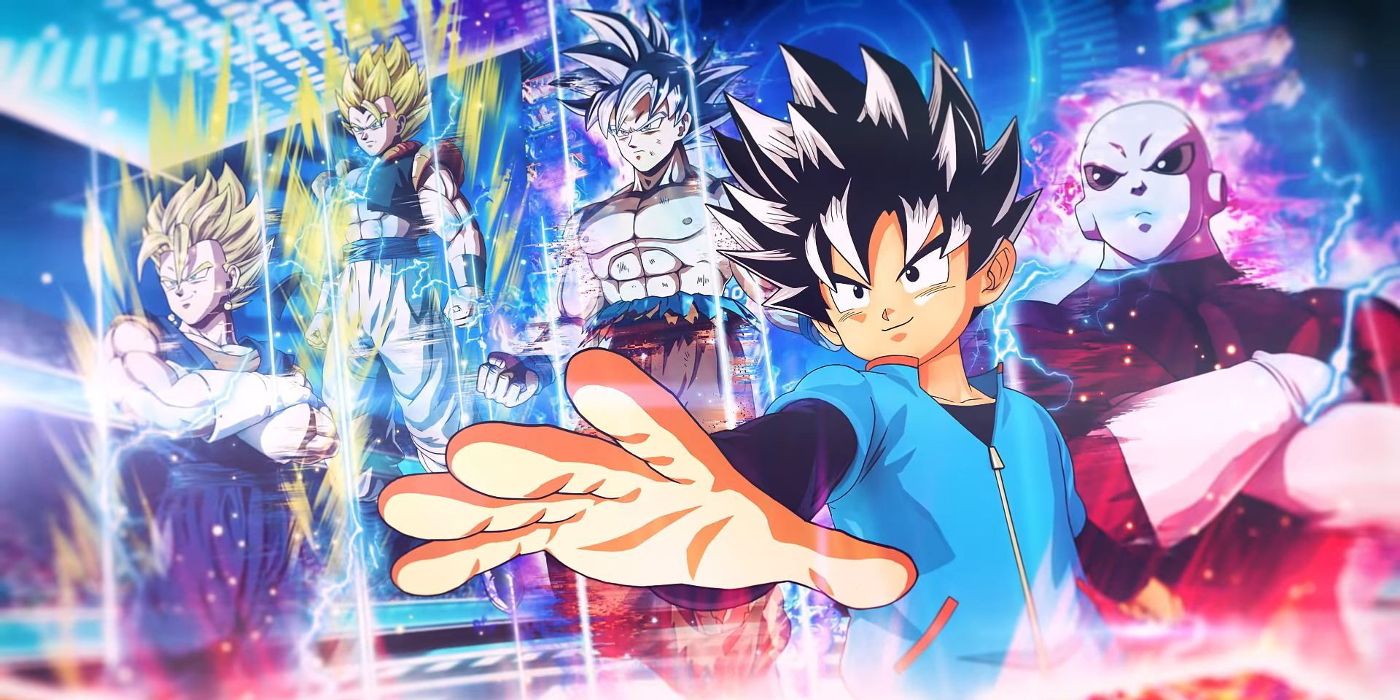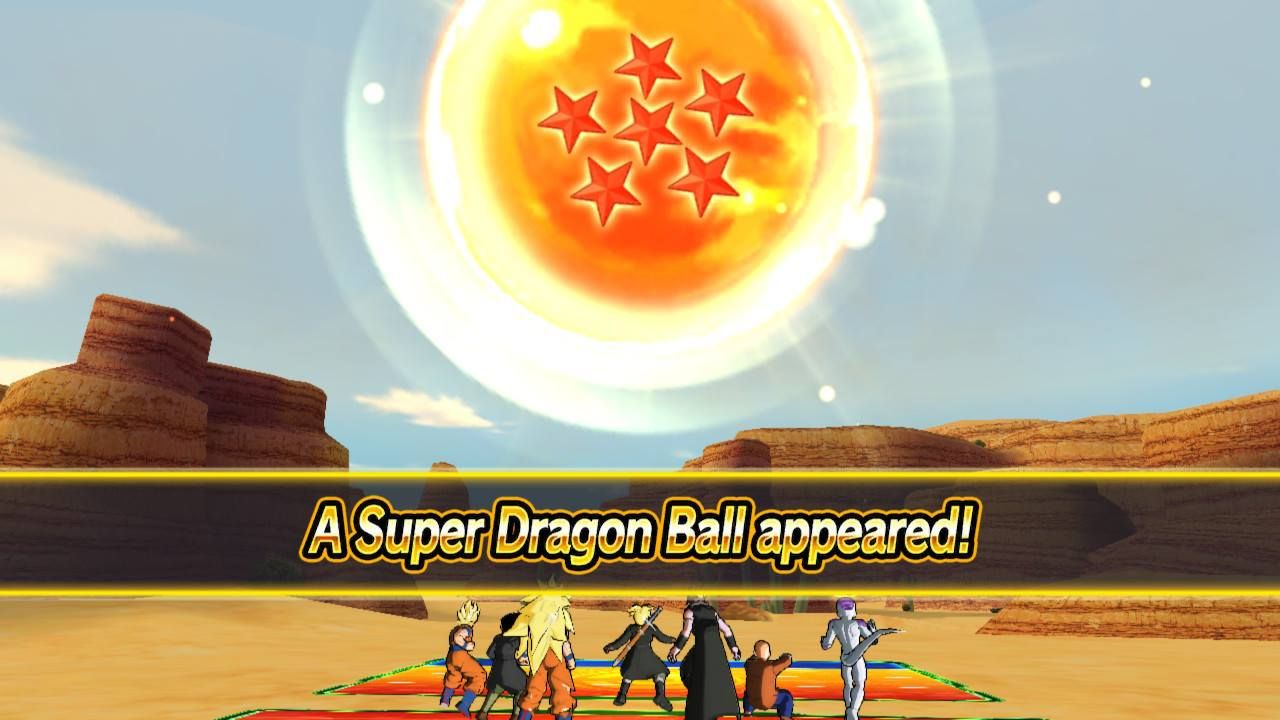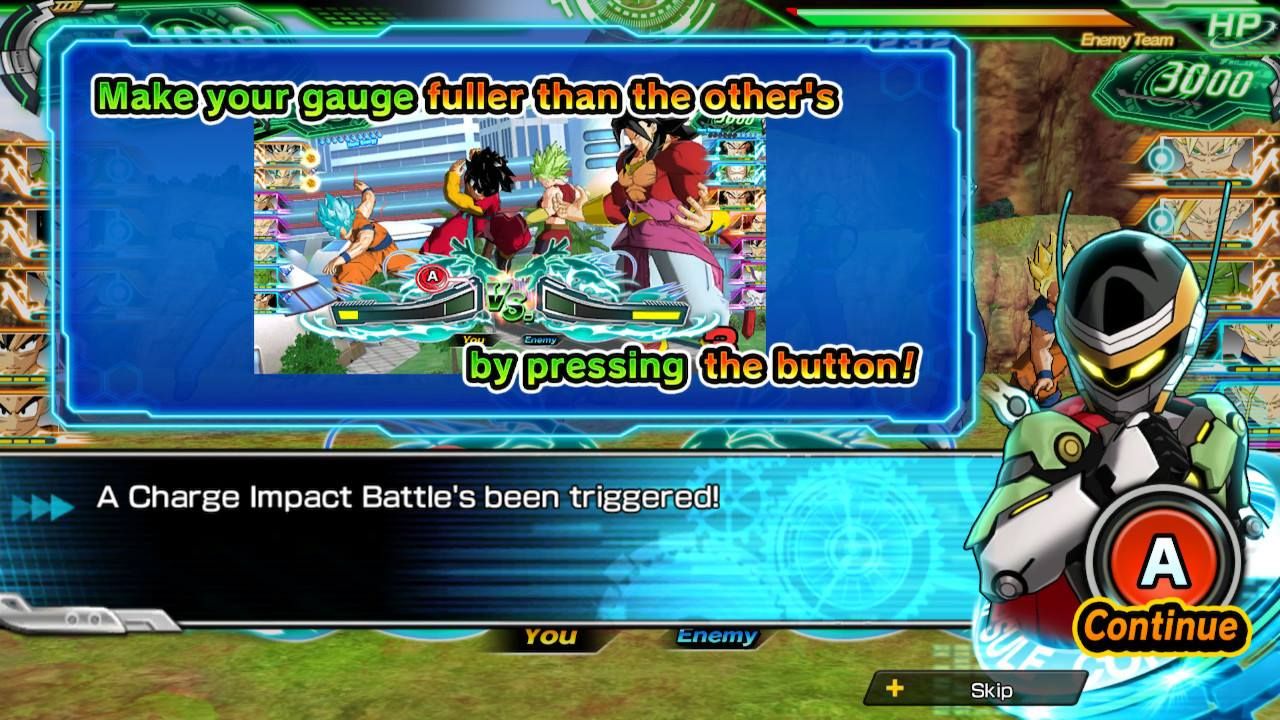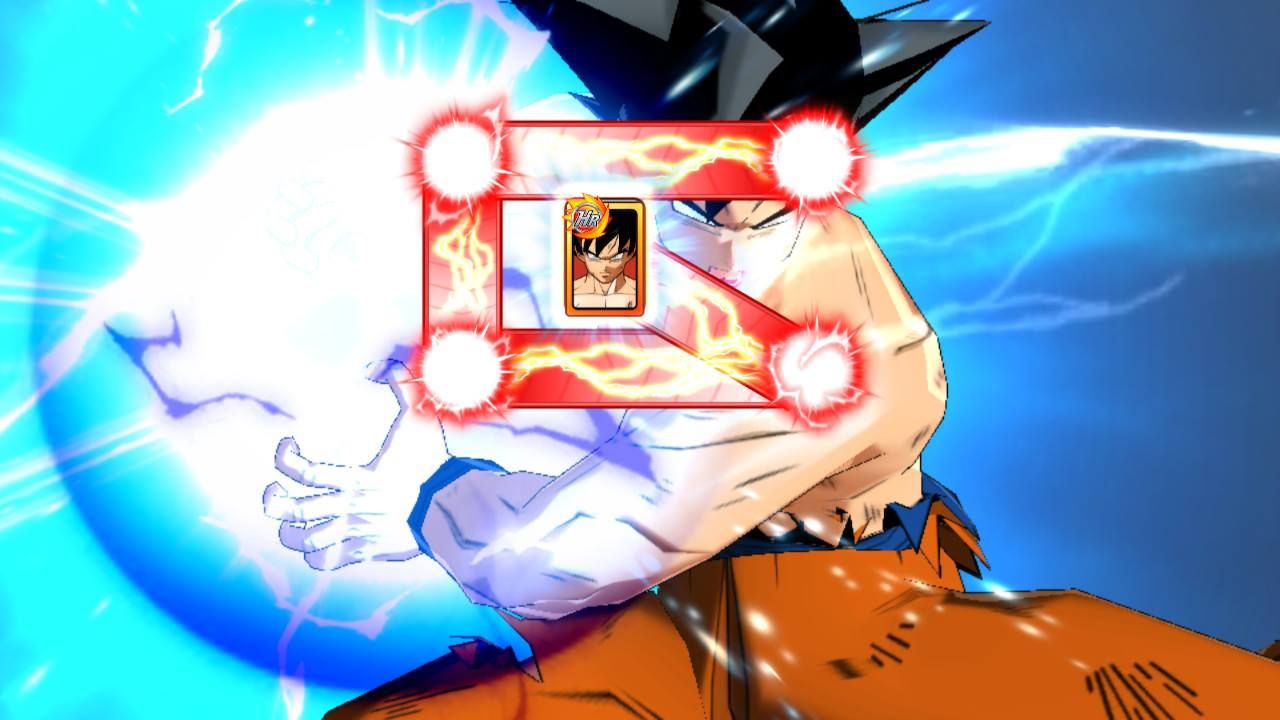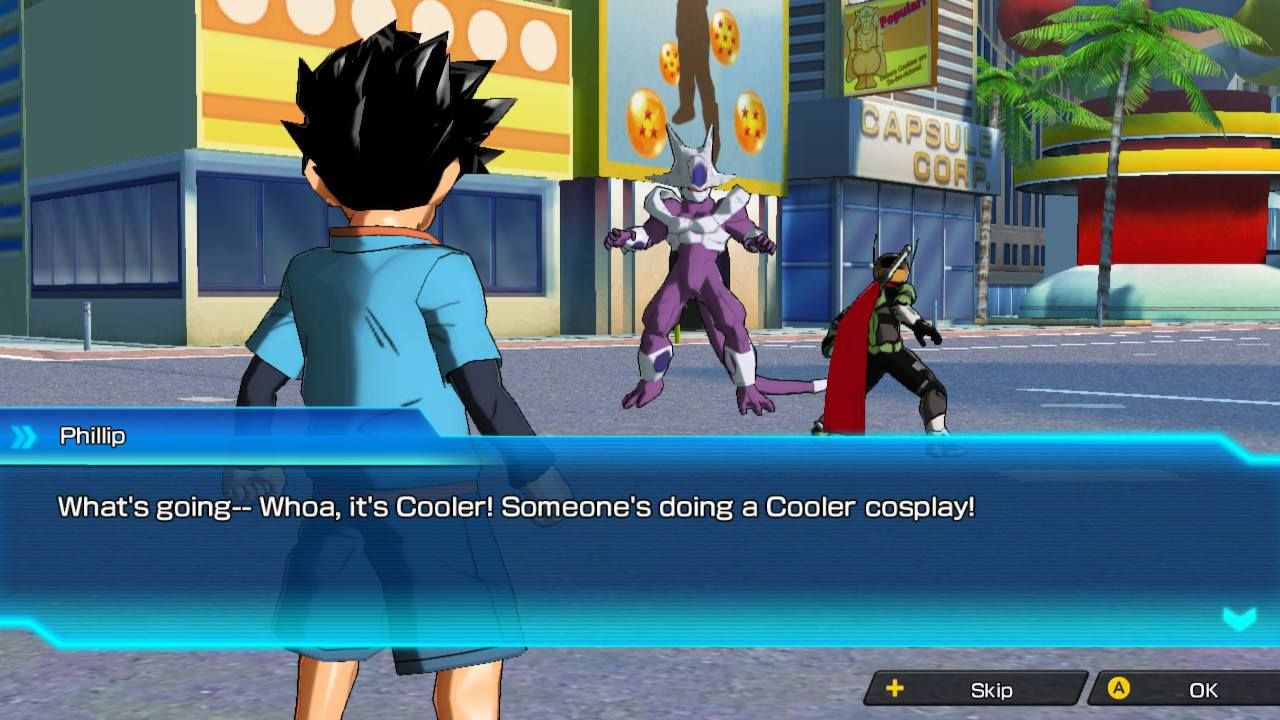Super Dragon Ball Heroes: World Mission seeks to bring the arcade sensation to Western home audiences but only works for the most hardcore fans.
Super Dragon Ball Heroes: World Mission is the first non-handheld localization of a Japanese arcade game that blends 3D Dragon Ball fighting game visuals with mixed reality trading card gameplay. The original game gained significant popularity in Japanese arcades by combining the massive franchise with a captivating gameplay gimmick, in which players place their physical Dragon Ball Heroes cards onto a specialized board to deploy their favorite characters from various series and timelines onto a virtual battlefield.
Now the franchise makes its Western console debut with this port ditching the physical cards for free digital ones. While this should be a relief to anyone who has ever fallen down the financial well of booster packs before, the move from the arcade to the PC and Switch was a bit messy. Much of the gimmicky arcade appeal clings onto the experience like the useless human appendix to its functional large intestine. Still, Super Dragon Ball Heroes: World Mission's numerous imperfections won't keep otakus away, but it's feasible that avid card game players may find it hard to embrace the game when presented with its convoluted mechanics and technical missteps.
For starters, World Mission majorly deviates from traditional card games like Yu-Gi-Oh, with its gameplay closely resembling a cross between the mainline Pokémon games and Mega Man Battle Network. Including well over 1,000 cards that feature more than 300 characters, players take a deck of seven cards into battle with the goal of depleting their opponent's HP in a series of quick-time events (QTEs) called Charge Impacts (CIs). Usually, the player whose cards are imbued with the largest numbers and most overpowered abilities and effects wins. There are three card types, Co-op Bonuses, Super Abilities, Ultimate Unit Chances, Card Action Abilities, Touch Action Abilities, meters like Power Level, Hero Energy, card Stamina to balance, and that's not even everything - to say that World Mission is overwhelming is to put it lightly. However, as these QTEs determine who deals more and receives less damage, the course of battle ultimately comes down to players' ability to fill the Charge Impact meter to its fullest while defending and attacking each round. There are a few hitches to this that come in the form of CI buffs and debuffs, but this facet of World Mission is an otherwise barebones skill game.
CIs and other QTEs are the focus of cinematic scenes in which players watch their iconic fighters face off, but World Mission fails to deliver much spectacle during these animated sections. In fact, they might be the game's worst design choice. Even though they boast an impressive number of unique character models and a ridiculous number of re-skins, these feel underutilized when paraded around in a handful of recycled animations so stiff and amateur that they appear as if ripped from the Budokai era. Nevertheless, these animations comprise the majority of what players see during matches, and the utter lack of an option to skip them during single player battles hamstrings the game's pace.
Also showcased during these interactive scenes are Card and Touch Action Abilities, which trigger bombastic attacks when executed successfully. Unfortunately, these sequences aren't compelling to trigger, requiring players to complete bizarre QTEs by moving a card-shaped cursor around on a representation of the game board or drawing shapes over the attacking character. Unlike CIs, these timed QTEs are too easy to possibly mess up and add little to the experience aside from visual confusion.
World Mission suffers from an unwavering attachment to its roots in the arcades of Japan, and the above issues are only a portion of this larger problem's symptoms. Like ports of other Japanese exclusives before it, some of World Mission's English translation is a little awkward in places, with card effects being somewhat inelegant (but consistent) in their wording. However, that doesn't hold a candle to the fact that none of the Japanese audio in World Mission is translated into English, neither through subtitles or voice dubs. While it's probable that die-hard Dragon Ball fans will be unfazed to know that the characters are exclusively voiced by the Japanese cast, their tune will change when quips are being screamed over one another while the game's announcer narrates the action, none of which they will understand unless they speak Japanese. This is accompanied by World Mission's unpolished sound design, which is probably no big deal in a noisy arcade but is painfully clear when played through home speakers or headphones. Worst of all, it appears no one considered including options or settings of any kind, meaning that players wanting to tweak aspects of the game's audio or controls in the name of preference or accessibility are fresh out of luck.
Not everything about World Mission is bad news and the game's campaign serves as a long, colorful tutorial for players while they bolster their decks for online play, and it's liable to be many players' favorite part of the game. World Mission is set in a world in which Dragon Ball Heroes is a treasured past-time, plagued by a sudden series of anomalies that are warping Dragon Ball characters from different timelines and universes into both the virtual and real worlds. This provides the game with endless opportunities to reference any and all events from Dragon Ball Z all the way through Dragon Ball Super - even the retconned Dragon Ball GT gets some love - while creating hilarious breaks in continuity. The resulting clashes and paradoxes create entertaining moments that are often as self-aware as they are absurd, and the dialogue feels surprisingly authentic between the characters and all their iterations. As such, fans of the franchise will adore World Mission, but players less invested in the anime will probably skip through the dialogue and focus on the battles. Additionally, the campaign includes lots of extra scenarios that generously increase individual chapters' length and replayability
Online play, meanwhile, is fairly straightforward and plays almost identically to single player battles, complete with all of the fight animations and QTEs. Of course, there's the added unpredictability of a human opponent that all card game players crave, but all the usual caveats to interconnectivity are present in World Mission. Most battles end in a quick rout, with players either getting decimated or doing the decimating. In-game chat is relegated to Stickers, preset quips and responses to curb toxicity at the cost of meaningful communication. The game's reliance upon QTEs, namely Charge Impacts, highlights lag otherwise guised by lengthy animations, cheapening the outcomes of particularly delayed Attack Phases. Overall, though, World Mission's online component is more than serviceable, offering spaces for both casual and competitive play in which players can take on strangers and friends while perfecting their decks and strategies.
Lastly, there's the matter of World Mission's approach to monetization - that is, it's refreshingly welcome lack thereof. Like in the golden days of console gaming, players can unlock every card and item by just playing the game. Despite Dragon Ball Heroes' arcade presence being designed to generate revenue from blind card packs, for whatever marvelous reason nothing can be bought with real money in World Mission. And its fairly giving at that, as campaign missions provide a steady flow of currency, which players can redeem for one-time consumable items, permanent passive and active abilities, and cards of varying rarity. Though the Gacha Shop does award duplicates, they're immediately transformed into Ticket Pieces, which can be crafted into Gacha Tickets for 10 pieces and Rare Gacha Tickets fo 50. This is a bit steep, but the game avoids devolving into a grindfest early on with its massive library of cards, leaving a lot of room to grow for new players - trying to complete a collection is likely a different story, however.
Super Dragon Ball Heroes: World Mission carries a fun card game at its core, but the final product is a mediocre port laden down with mechanical convolution and kitschy arcadiness, each present for their own sake. While there are saving graces like the lighthearted fan service offered by the campaign, a solid online offering, and a much-appreciated rejection of genre standard monetization practices that keep things enjoyable and fair, there are plenty of negatives that the average player will have to wade through in order to appreciate the good. World Mission's semi-polished state and strange presentation will be everything that ardent fans of everything Dragon Ball want in an unapologetic arcade experience, but genre veterans looking for the next Magic the Gathering don't need to feel guilty for passing on this one.
Super Dragon Ball Heroes: World Mission is currently available for PC and Switch. Screen Rant was provided a Switch code for review.

